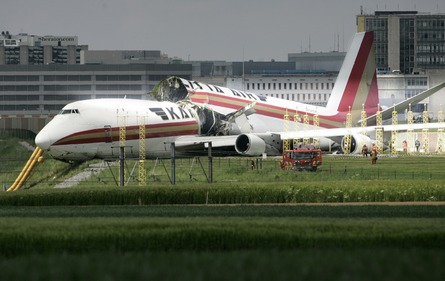Belgian investigators believe a bird-strike on a Kalitta Air Boeing 747-200 freighter at Brussels Airport triggered the crew to abort take-off at a late stage, causing the jet to overrun and break up.
DNA analysis of organic material recovered from the site shows that a kestrel struck the starboard inboard Pratt & Whitney JT9D engine as the aircraft accelerated along the runway on 25 May.
Cockpit-voice recorder evidence has revealed that, four seconds after the jet reached the crucial V1 decision speed, there was a loud bang, followed by a loss of power from the engine.
Two seconds later - and despite being six seconds past V1 - the crew attempted to abort the take-off. The aircraft failed to stop in the remaining runway length, travelling 300m beyond the end.
It broke up and was destroyed but all the crew members, and a passenger on board the service to Bahrain, escaped.
 |
|---|
© Yves Logghe/AP/PA Photos |
There were no technical problems with the aircraft, which was carrying 73t of cargo, or the runway condition.
Belgium's air accident investigation unit, in an interim statement on the inquiry, says the "likely" cause of the accident was the pilot's decision to execute a post-V1 abort after the ingestion of a bird by the inboard starboard engine.
It points out that the crew was highly-experienced: the pilot had accumulated 15,000hr including 3,000hr on 747s.
Investigators have suggested that, while the runway-end safety area meets ICAO standards, it could be improved with an arrestor system. The inquiry adds that the risk of bird-strike should be assessed to determine whether bird-control measures at Brussels Airport should be strengthened.
Source: Air Transport Intelligence news























